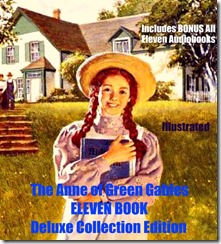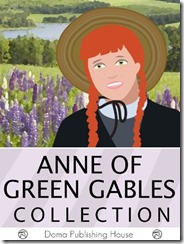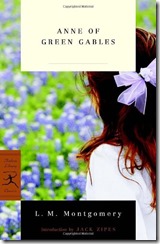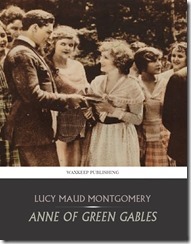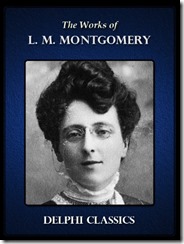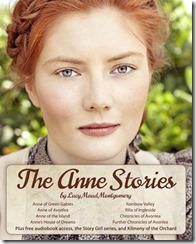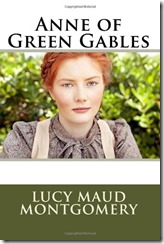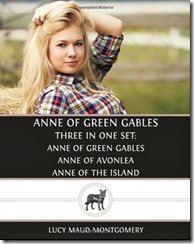Respect the Work: Republishing Public Domain Works
A child of about eleven, garbed in a very short, tight, very ugly dress of yellowish-gray wincey. She wore a faded brown sailor hat and beneath the hat, extending down her back, were two braids of very thick, decidedly red hair. (The reader first meets Anne Shirley, in Anne of Green Gables, by Lucy Maud Montgomery)
The availability of self-publishing services offers the exciting opportunity to recapture books long out of print, to be enjoyed again by contemporary readers. For works that are in the public domain, there are a number of means available to capture the text and rapidly re-publish the work. Amazon, a driving force in the emergence of self-publishing, provides Kindle Direct Publishing (KDP) for their Kindle series of electronic readers, and CreateSpace (CS) for hard copy publishing.
The steps needed to capture a public domain work and publish it on KDP or CS are: 1) capture the text, 2) format the book, 3) compile using services provided by KDP and CS, 4) decide on pricing and distribution, and 5) publish! The Amazon services offer help, recommendations and templates for every step of the process. You can add a specially designed cover for your republished book, or choose one of the templates or generic versions offered by KDP and CS. The entire process can be somewhat time consuming depending on the care taken in capturing the work or designing the format, but it is straightforward, and ultimately not very difficult.
Amazon does have policies in place with the goal to provide a positive experience for the reader who buys books at Amazon.com. One of these policies is that if a publisher is going to publish a public domain work, they should provide added value to it. Adding literary commentary, historical context of the period, new illustrations or maps all constitute adding value to a public domain work. It is still possible to republish work without annotating or prefacing it, but if Amazon chooses to publish the work itself, it will eliminate the catalog posting for undifferentiated versions.
Searching Amazon.com for a well-loved book such as Anne of Green Gables is an excellent way to see the variety of approaches that publishers take in presenting an existing work in a new publication. In the first two front covers, below, the publisher has used similarly iconic images, clearly associated with Anne, but with very different graphic art styles and degrees of artistic sophistication. In the third example below, on the right, the publisher has used a photograph which is more subtly, indirectly associated with Anne and her “decidedly red hair”.
Finding an image that suits the book can be difficult. The examples below illustrate another approach taken by publishers. On the left, the publisher has chosen a photograph suggestive of the era when the story takes place. In the course of the specific story, Anne of Green Gables, Anne ages from 11 to about 16. The image selected below may be a small stretch in depicting a girl of 16, but it is a reasonable portrayal. Another approach to selecting a cover for a book to be republished is to use a photograph of the author, as in the case below on the right. Using a picture of the author eliminates any negative associations between the image and the story within, but it may also diminish the connection that the reader has to the characters.
One publisher, Aaron Kerr, published the entire collection of stories, under the title “The Anne Stories”. In the product description, he cites his reason for publishing the collection:
As the father of four daughters who LOVE the Anne books, I set out to create the ultimate Kindle edition of these timeless books. I wanted a perfectly-formatted, easy-to-use Kindle release at a price that couldn’t be beat.
Kerr selected an image for the cover that shows a young woman, in period dress, with a hint of braid, barely visible, caught up in her unmistakably red hair, below left. Faintly visible are a sprinkle of freckles that also feature prominently in the story, adding to the authenticity of the association of the cover image with the story. In the stories compiled by Kerr, Anne ages from 11 to adulthood. Under these circumstances, the image selected by Kerr is lovely, and appropriate to the span of the story. Seeing a face so well suited for the collection of “The Anne Stories”, it is not surprising to find it on other editions of the book as well, as on the example on the right. In this example, published by Simon and Brown Publishers, the cover image is for the original story only, in which Anne ages to 16 years. The young woman in the image is clearly older than 16, making the use of this image by Simon and Brown specifically for Anne of Green Gables less than ideal.
Each of the examples shown is, within the bounds of artistic license, appropriate for use as a cover for a republication of Anne of Green Gables. In contrast, the cover shown below represents an image choice to represent Anne that is disjoint from the character as created by the author and portrayed in the book. As with the Kerr compilation, the publisher has included stories in which Anne ages from 11 to young adulthood. Therefore, selection of a model who could represent Anne at the end of the series is reasonable and acceptable. What makes this choice of image an inappropriate choice for the cover of the stories of Anne Shirley are two things. First, the model has blond hair, and plainly does not represent a character with “decidedly red hair”. If a character’s hair color were inconsequential to the telling of a story, making an artistic change like this might be acceptable. In this case, however, the image of Anne with her flame red hair in braids is an important part of who Anne is, and the choice of a model with a different hair color demonstrates a lack of respect for the work being republished. The second issue with this choice of cover image has to do with the atmosphere of the stories written by L. M. Montgomery. Anne of Green Gables is a smart, sweet and innocent girl, a model for young girls. The image chosen below reflects a more sexualized character that is inconsistent with the Anne as created by Montgomery. When the book was advertised on Amazon.com, it generated such a fierce backlash among loyal readers of the Anne of Green Gables stories that the image was removed, and the book is listed as “Temporarily out of stock”.
The speed, volume and energy of the reaction from readers reflected on Amazon product reviews and on social networks should send a clear message to publishers looking to republish works in the public domain: respect the work, and offer a product that honors the original author with an authentic, faithful reproduction of their work.
Related:


